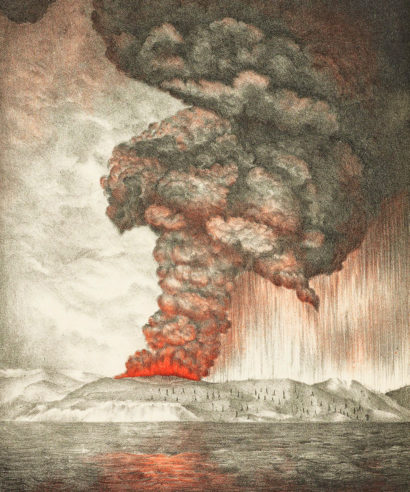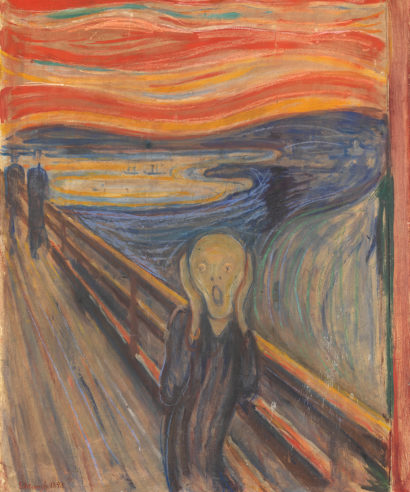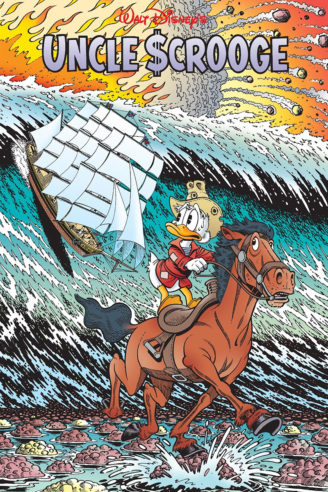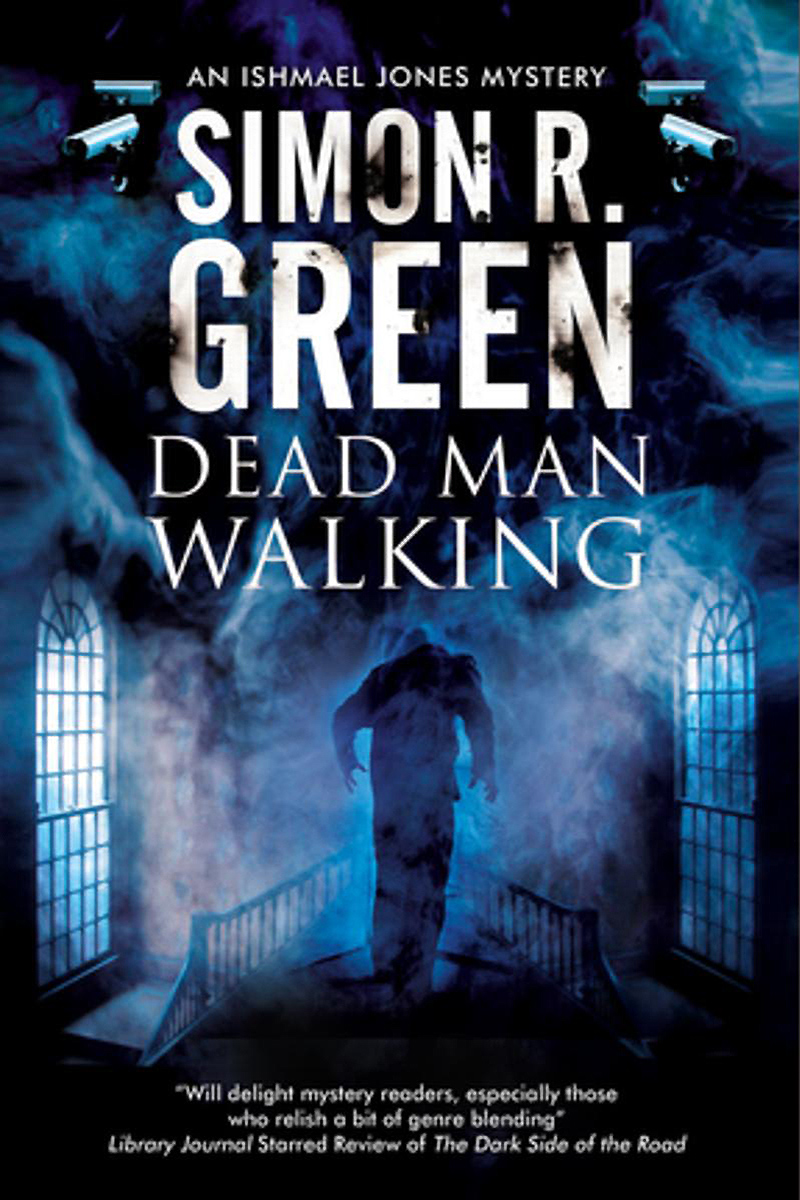The second of the in-between, or “B”, chapters in Keno Don Rosa’s The Life and Times of Scrooge McDuck, The Cowboy Captain of the Cutty Sark (1998) takes place immediately after young Scrooge’s first American adventure in The Buckaroo of the Badlands (1992, annotations here).
Having left the employ of the Scottish-born Montana cattle baron Murdo MacKenzie, Scrooge is shipping two Texas longhorns aboard the famous Cutty Sark to the Dutch East Indies, where he will witness the eruption of Krakatoa.
The plot came easy to Rosa. Having decided he wanted Scrooge near Krakatoa in 1883, he discovered that the greatest sport on Java, the main island in what is now Indonesia, at the time was the annual Madura Island bull race, or karapan sapi. The Cutty Sark really did make a voyage to Australia for wool in 1883. There is no record she made a side trip to Batavia (now Jakarta) that year, but, writes Rosa in Volume 8 of Uncle Scrooge and Donald Duck: The Don Rosa Library (2017), “prove that it didn’t happen, I dare ya’!”
Less easy was drawing the Cutty Sark, with its tens of thousands of square feet of sail and its ten miles of lines, in every other panel…
Cutty Sark was the last great “tea clipper”, named after their preponderance in the Asian tea trade, of the pre-steam era. Built in Scotland in 1869, she sailed until 1922, when she was sold to a retired sea captain, who used her as a training vessel. After the Second World War, she was transferred to a dry dock in Greenwich, London, where she remains on display. In her heydays, she sailed faster than any other ship at sea.
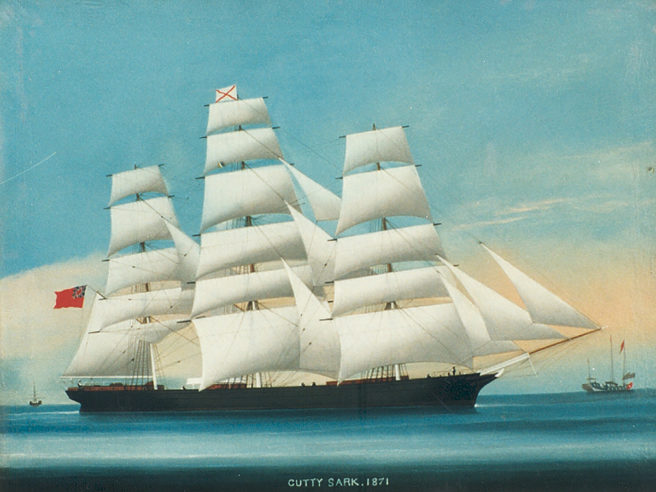
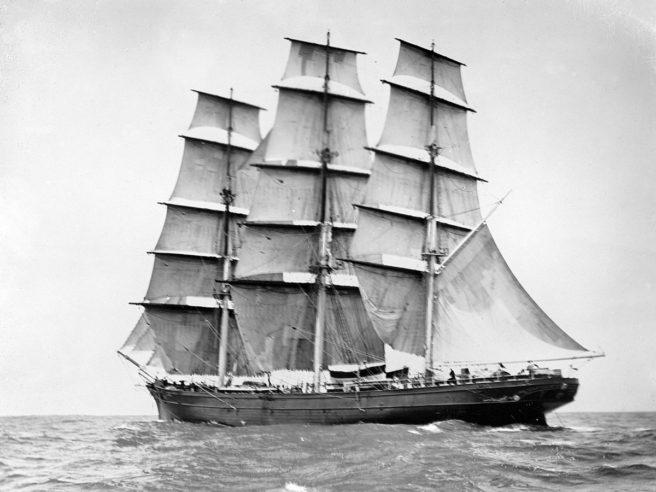
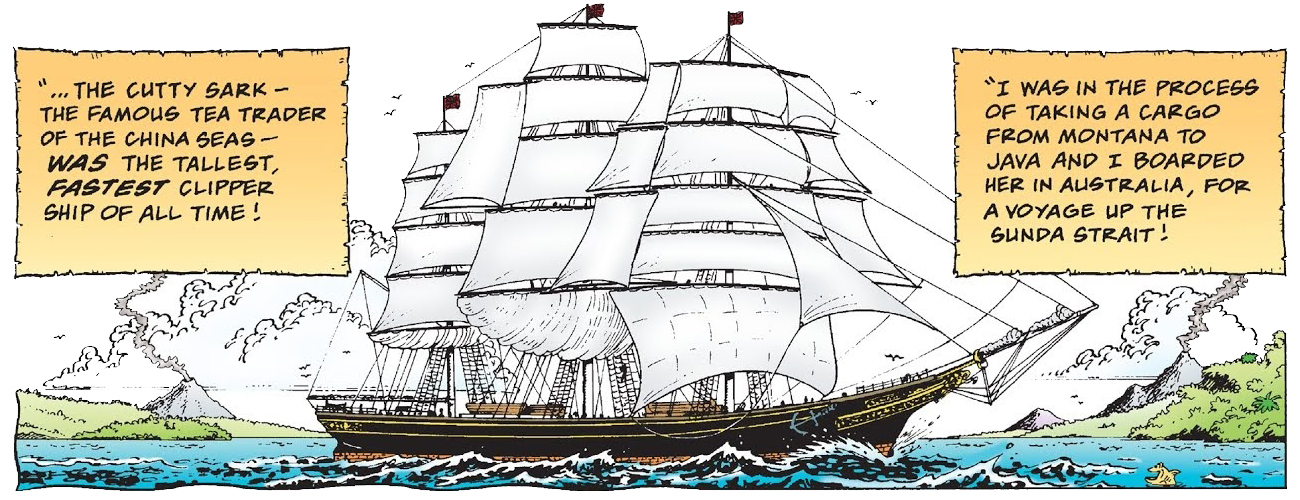
The opening of the Suez Canal in the year Cutty Sark was put to sea made it economical for steamships to compete with clippers on the Far East trade. (Coal wasn’t cheap.) Until then, the clippers had dominated the shipping of low-volume, high-profit goods, such as opium, spices and tea. Many of the former “tea” clippers switched to transporting migrants to, and wool from, Australia.
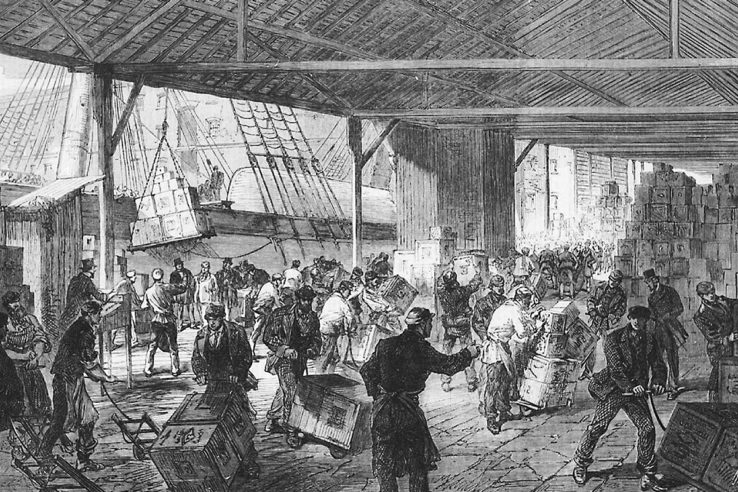
The character of Captain Moore is based on the real-world Francis William Moore, who captained Cutty Sark for one round trip to China in 1872-73, and Richard Woodget, captain from 1885-95 and an avid photographer.
Java in 1883 was governed by a Dutch resident, who answered to the governor-general of the entire island group. Local potentates answered to the residents. They lost power but gained wealth. By the turn of the century, the Dutch were able to govern a population of 35 million across thousands of islands with 250 civil servants and 16,000 soldiers.
The two local rulers Scrooge interacts with were based on sultans mentioned in travelogues Rosa found in the archive of his local university. Unfortunately, one, the 1890s travel story On The Subject of Java, misidentified the sultan of Yogyakarta, called Djokja by the Dutch, as Mangkunagara V. In fact, the sultanate’s ruler from 1877 to 1921 was Hamengkubuwono VII. A fan from Indonesia wrote Rosa after the original release to correct the mistake and the name was changed in later editions.
Sultan Pakubuwono IX of Surakarta, or Solo, is historically accurate. He ruled the principality in Central Java from 1861 to 1893. In Rosa’s story, though, Pakubuwono’s interpreter looks more like the real-world sultan.
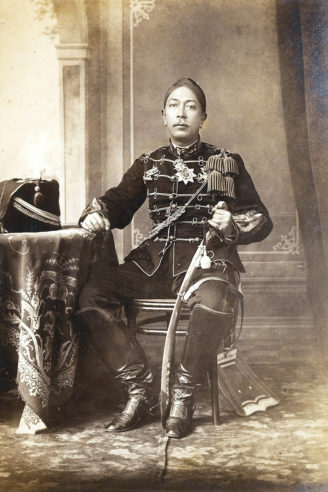

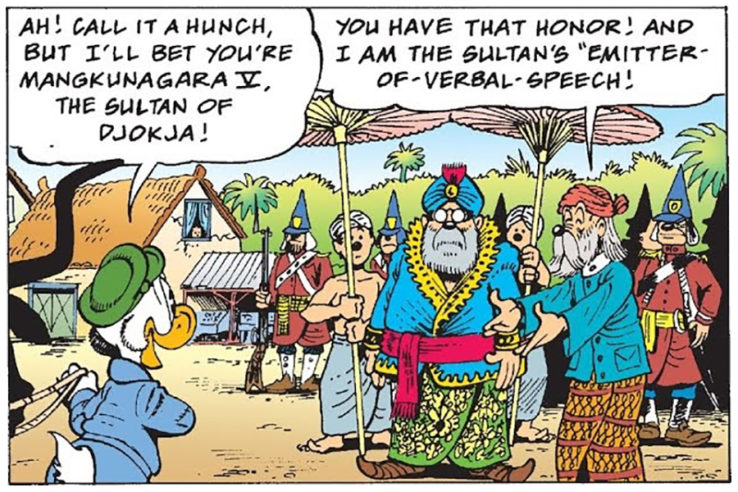

Jakarta is situated on a bay, but Rosa makes it appear smaller than it really is. In 1883, ships would still sail into the Haven Kanaal (Harbor Channel), or Sunda Kelapa. Tanjung Priok, the new port, didn’t open until 1885. Rosa puts it on the wrong side of the bay: it is east, not west, of Old Town.
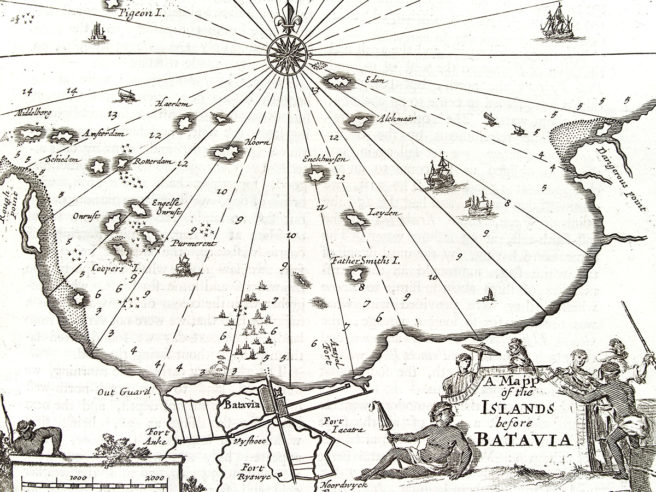
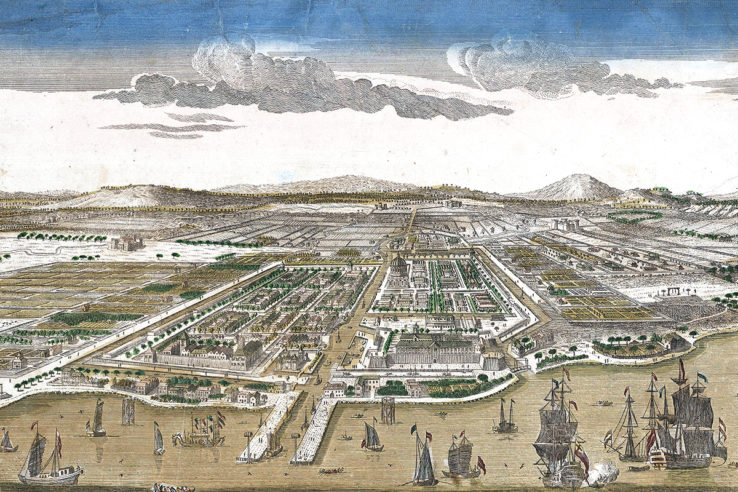
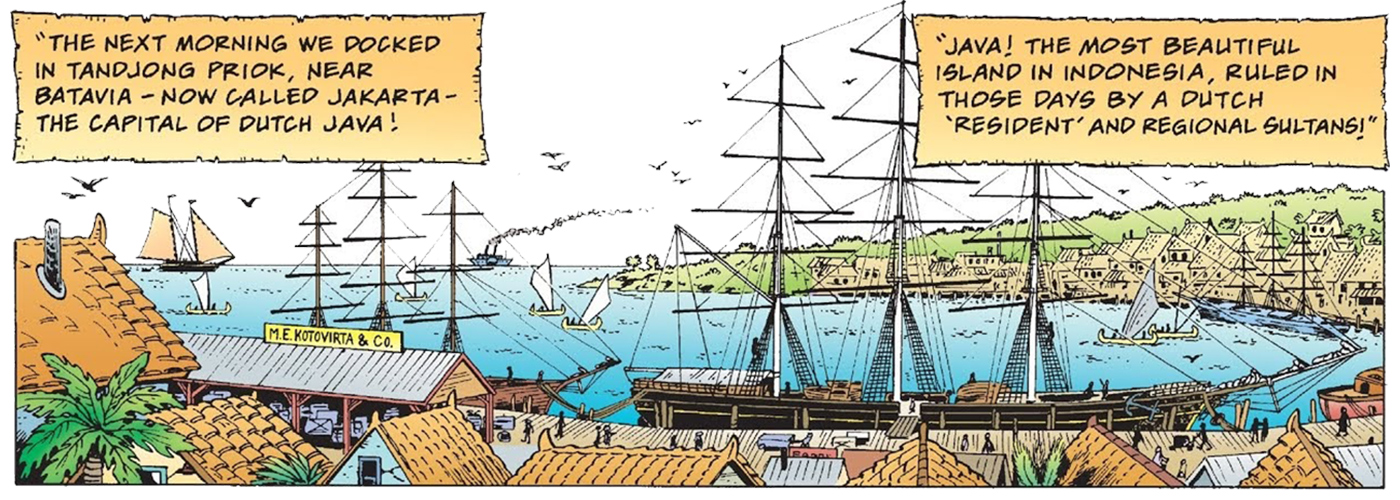
Based on Scrooge’s and Ratchet Gearloose’s vantage point later in the story, when Batavia is to their right, Krakatoa to their left and Sumatra across the Sunda Strait, they must be standing on Mount Salak, an eroded Java volcano that last erupted in 1938. Ratchet points to Danan, which was one of the three volcanic cones of Krakatoa.

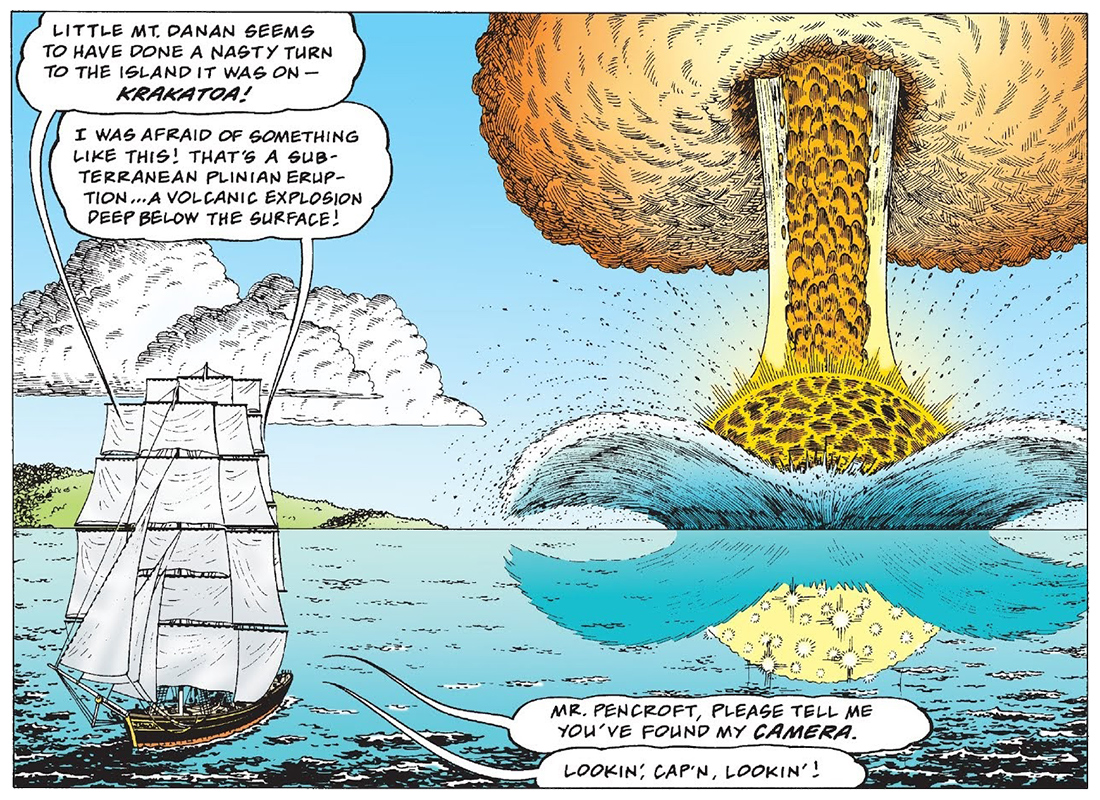
The eruption of Krakatoa was one of the deadliest and most destructive in history. The explosion was heard as far away as Perth, Australia and ruptured the eardrums of sailors on ships in the Sunda Strait. Ash was propelled up to 80 kilometers into the air and rained down across the strait on Sumatra, where it killed about 1,000 people. The island of Krakatoa was almost completely destroyed. The eruption triggered a tsunami with waves as high as 40 meters. Towns on the coast of Banten, in West Java, were decimated. All the inhabitants of the small island of Sebesi, north of Krakatoa, died. The Dutch authorities estimated 36,417 fatalities.
For months after the eruption, sunsets around the world were a vivid red. It may explain the red sky in Edvard Munch’s 1893 painting The Scream. Global temperatures dropped 1.2 °C for five years.
